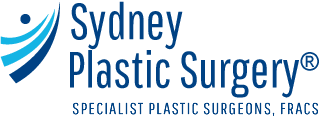Scar Revision
Scar revision is the method of eliminating your old scar and creating a new one that is more aesthetically pleasing.
The scar revision procedure involves making the scar area numb with a local aesthetic injection, removing the old scar, and repairing the wound either in a straight line or in a multiple zig-zag pattern if necessary.
The improved scar may take many weeks to flatten and lose its redness. The healing phase will take a minimum of 3 months, for the scar tissue to soften and mature into its best ultimate form.
Some scars have divots or hollowness directly underneath them. These are significantly improved by fillers, such as fat injection or dermal grafts, to improve the contour of the scarring.
Call us on free phone 1300 002 006 if you are outside Sydney or 9561 0222 if you’re in the Sydney area
Patients usually go home the same day. They return one week after surgery for a wound check. The second postoperative visit is six weeks later.
Keloid Scar
Keloid scars are raised, wide, purple scars that can result from many factors, including infection, bad wound healing, harsh tissue handling, and improper suturing technique. Certain anatomic areas, such as the middle of the chest, sternum, shoulders, and ear lobes, are more prone to keloid scaring than other anatomic areas. Asians and Africans are genetically predisposed to keloid and hypertrophic scarring.
Treatment for Keloid scaring ranges from Steroid injection, surgical intralesional excision, pressure technique, hydration therapy, silicone sheet (sica care sheet) and radiotherapy.
The treatment is customised to the patient’s scar type (unsightly scar, wide scar, hypertrophic scar or keloid scar) and anatomic position.
Commonly, patients require multimodality treatment for the management of their keloid scarring.
What are the risks associated with this procedure?
Plastic surgery, like any surgical procedure, carries inherent risks and potential complications.
Please read our Risks and Complications of Plastic Surgery page.
